Legacy of the Roman Empire
This article possibly contains original research. (February 2021) |
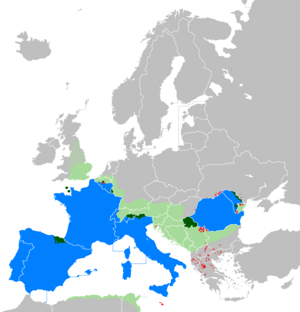
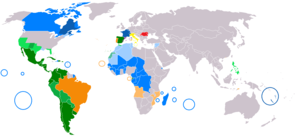
The legacy of the Roman Empire has been varied and significant. The Roman Empire, itself built upon the legacy of other cultures, has had long-lasting influence with broad geographical reach on a great range of cultural aspects, including state institutions, law, cultural values, religious beliefs, technological advances, engineering, and language.
This legacy survived the demise of the empire itself (
Language
In
In the 21st century the Romance languages, which comprise all languages that descended from Latin, are spoken by more than 920 million people as their mother tongue, and by 300 million people as a second language, mainly in the Americas, Europe, and Africa.[4] Romance languages are either official, co-official, or significantly used in 72 countries around the world.[5][failed verification][6][7][8][9][10] Of the United Nations' six official languages, two (French and Spanish) descend from Latin.
Additionally, Latin has had a great influence on the lexicon of West Germanic languages. Romance words make respectively 59%, 20% and 14% of English, German and Dutch vocabularies.[11][12][13] Those figures can rise dramatically when only non-compound and non-derived words are included. Accordingly, Romance words make roughly 35% of the vocabulary of Dutch.[13] Of all the loanwords in Dutch, 32.2% come directly from some form of Latin (excluding loans from Romance languages).[14] Over 60% of Albanian vocabulary consist of Latin roots, causing Albanian to once have been mistakenly identified as a Romance language.[15]
Script
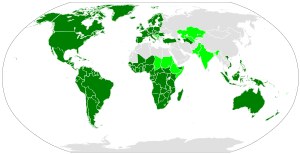
All three official scripts of the modern
Latin literature
The Carolingian Renaissance of the 8th century rescued many works in Latin from oblivion: manuscripts transcribed at that time are our only sources for some works that later fell into obscurity once more, only to be recovered during the Renaissance: Tacitus, Lucretius, Propertius and Catullus furnish examples.[18] Other Latin writers never went out of circulation: Virgil, reinterpreted as a prophet of Christianity by the 4th century, gained the reputation of a sorcerer in the 12th century.
Through the Roman Empire, Greek literature also continued to make an impact in Europe long after the Empire's fall, especially after the recovery of Greek texts from the East during the high Middle Ages and the resurgence of Greek literacy during the Renaissance. Many educated Westerners from the Renaissance up to the 20th century, for instance, read
Education
Martianus Capella developed the system of the seven liberal arts that structured medieval education. Although the liberal arts were already known in Ancient Greece, it was only after Martianus that the seven liberal arts took on canonical form. His single encyclopedic work, De nuptiis Philologiae et Mercurii "On the Marriage of Philology and Mercury", laid the standard formula of academic learning from the Christianized Roman Empire of the 5th century until the Renaissance of the 12th century.
The seven liberal arts were formed by the trivium, which included the skills of grammar, logic, and rhetoric, while arithmetic, geometry, music, and astronomy played part as the quadrivium.
Calendar and measurement
The modern Western calendar is a refinement of the Julian calendar, which was introduced by Julius Caesar. The calendar of the Roman Empire began with the months Ianuarius (January), Februarius (February), and Martius (March). The common tradition to begin the year on 1 January was a convention established in ancient Rome. Throughout the medieval period, the year began on 25 March, the Catholic Solemnity of the Annunciation.
The 5th-century Roman monk Dionysius Exiguus devised the modern dating system of the Anno Domini (AD) era, which is based on the reckoned year of the birth of Jesus, with AD counting years from the start of this epoch, and BC denoting years before the start of the era.
The modern seven-day week follows the Greco-Roman system of planetary hours, in which one of the seven heavenly bodies of the Solar System that were known in ancient times—Saturn, Jupiter, Mars, the Sun, Venus, Mercury and the Moon—is given "rulership" over each day. The Romance languages (with the exception of Portuguese, that assigns an ordinal number to five days of the week, from Monday to Friday, beginning with segunda-feira, and ending with sexta-feira) preserve the original Latin names of each day of the week, except for Sunday, which came to be called dies dominicus (Lord's Day) under Christianity.
| Day | Sunday Sōl (Sun) |
Monday Luna (Moon) |
Tuesday Mars (Mars) |
Wednesday Mercurius (Mercury) |
Thursday Iuppiter (Jupiter)
|
Friday Venus (Venus) |
Saturday Saturnus (Saturn) |
|---|---|---|---|---|---|---|---|
| Latin | dies Sōlis | dies Lūnae | dies Martis | dies Mercuriī | dies Iovis | dies Veneris | dies Saturnī |
| Italian | domenica | lunedì | martedì | mercoledì | giovedì | venerdì | sabato |
| French | dimanche | lundi | mardi | mercredi | jeudi | vendredi | samedi |
| Spanish | domingo | lunes | martes | miércoles | jueves | viernes | sábado |
| Romanian | duminică | luni | marți | miercuri | joi | vineri | sâmbătă |
| Catalan | diumenge | dilluns | dimarts | dimecres | dijous | divendres | dissabte |
Hours of the day
The 12-hour clock is a time convention popularized by the Romans in which the 24 hours of the day are divided into two periods. The Romans divided the day into 12 equal hours, A.M. (ante-meridiem, meaning before midday) and P.M. (post-meridiem, meaning past midday). The Romans also started the practice used worldwide today of a new day beginning at midnight.
Numerals and units
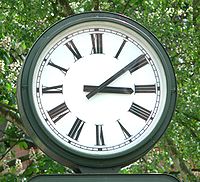
Roman numerals continued as the primary way of writing numbers in Europe until the 14th century, when they were largely replaced in common usage by Hindu–Arabic numerals. The Roman numeral system continues to be widely used, however, in certain formal and minor contexts, such as on clock faces, coins, in the year of construction on cornerstone inscriptions, and in generational suffixes (such as Louis XIV or William Howard Taft IV). Romance languages (and also other languages such as Russian, Polish and Basque) write centuries in Roman numbers; in Spanish, for example, "21st century" is written siglo XXI.
The Romans solidified the modern concept of the hour as one-24th part of a day and night. The English measurement system also retains features of the Ancient Roman foot (11.65 modern inches), which was used in England prior to the Anglo-Saxon settlement of Britain. The inch itself derives from the Roman uncia, meaning one-twelfth part.
Three-age systems
Although the present archaeological system of the three main ages—stone, bronze and iron—originates with the Danish archaeologist Christian Jürgensen Thomsen, the concept of dividing pre-historical ages into systems based on metals extends to Ancient Rome, originated by the Roman Lucretius in the first century BC.[citation needed]
Religion
Christianity
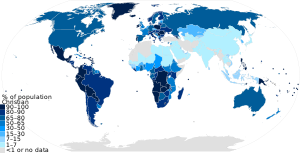
While classical Roman and Hellenistic religion were ultimately superseded by Christianity, many key theological ideas and questions that are characteristic of Western religions originated with pre-Christian theology. The first cause argument for the existence of God, for instance, originates with Plato. Design arguments, which were introduced by Socrates and Aristotle and remain widely discussed to this day, formed an influential component of Stoic theology well into the late Roman period. The problem of evil was widely discussed among ancient philosophers, including the Roman writers such as Cicero and Seneca, and many of the answers they provided were later absorbed into Christian theodicy. In Christian moral theology, moreover, the field of natural law ethics draws heavily on the tradition established by Aristotle, the Stoics, and especially by Cicero's popular Latin work, De Legibus. Cicero's conception of natural law "found its way to later centuries notably through the writings of Saint Isidore of Seville and the Decretum of Gratian"[20] and influenced the discussion of the topic up through the era of the American Revolution.
Christianity itself also spread through the Roman Empire; since emperor
Christianity also served as a conduit for preserving and transmitting Greco-Roman literary culture. Classical educational tradition in the
Major works of Greek and Latin literature, moreover, were both read and written by Christians during the imperial era. Many of the most influential works of the early Christian tradition were written by Roman and
Pagan revival
There have been revivals of the ancient Roman polytheistic religion in modern times, mostly in Italy. While interest in reviving the ancient Roman paganism dates back to the Renaissance, this phenomenon intensified in the 19th and 20th centuries. Today it has a presence mostly in the Western world, with Nova Roma being the most notable international revivalist organization.[citation needed]
Science and philosophy
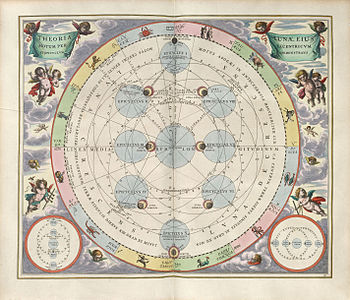

While much of the most influential
The widespread Lorem ipsum text, which is widely used as a meaningless placeholder in modern typography and graphic design, is derived from the Latin text of Cicero's philosophical treatise De finibus.
Pagan philosophy was gradually supplanted by Christianity in the later years of the Empire, culminating in the closure of the
In science, the theories of the Greco-Roman physician
At Alexandria, the engineer and experimenter
All of the planets in the
Roman law and politics
Although the law of the Roman Empire is not used today, modern law in many jurisdictions is based on principles of law used and developed during the Roman Empire. Some of the same Latin
The modern concept of
Inventions

Many Roman inventions were improved versions of other people's inventions and ranged from military organization, weapon improvements, armour, siege technology, naval innovation, architecture, medical instruments, irrigation, civil planning, construction, agriculture and many more areas of civic, governmental, military and engineering development.
That said, the Romans also developed a huge array of new technologies and innovations. Many came from common themes but were vastly superior to what had come before, whilst others were totally new inventions developed by and for the needs of Empire and the Roman way of life.
Some of the more famous examples are the Roman aqueducts (some of which are still in use today), Roman roads, water powered milling machines, thermal heating systems (as employed in Roman baths, and also used in palaces and wealthy homes) sewage and pipe systems and the invention and widespread use of concrete.
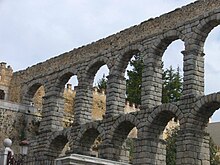
Metallurgy and glass work (including the first widespread use of glass windows) and a wealth of architectural innovations including high rise buildings, dome construction, bridges, and floor construction (seen in the functionality of the Colosseum's arena and the underlying rooms/areas beneath it) are other examples of Roman innovations.
Military inventiveness was widespread and included tactical/strategic innovations, new methodologies in training, discipline and field medicine as well as inventions in all aspects of weaponry, from armor and shielding to siege engines and missile technology.
This combination of new methodologies, technical innovation, and creative invention in the military gave Rome the edge against its adversaries for half a millennium, and with it, the ability to create an empire that even today, more than 2000 years later, continues to leave its legacy in many areas of modern life.
Colonies and roads
Rome left a legacy of founding many cities as colonia. There were more than 500 Roman colonies spread through the Empire, most of them populated by veterans of the Roman legions. Some Roman colonies rose to become influential commercial and trade centers, transportation hubs and capitals of international empires, like Constantinople, London, Paris, Vienna, and Budapest.
All those colonies were connected by another important legacy of the Roman Empire: the
Architecture
The Renaissance-era architectural style developed by Andrea Palladio, inspired by Greek and Roman architecture, became hugely influential throughout the Western world. In the mid-18th century, Roman architecture inspired Neoclassical architecture, part of the wider international movement of Neoclassicism. Though Neoclassical architecture employs the same classical vocabulary as late Baroque architecture, it tends to emphasize its planar qualities, rather than sculptural volumes. Projections and recessions and their effects of light and shade are flatter; sculptural bas-reliefs are flatter and tend to be framed in friezes, tablets or panels. Its clearly articulated individual features are isolated rather than interpenetrating, autonomous and complete in themselves.
International Neoclassical architecture was exemplified in
Italy clung to Rococo until the Napoleonic regimes brought the new archaeological classicism, which was embraced as a political statement by young, progressive, urban Italians with republican leanings.
Imperial idea
From a legal point of view, the Roman Empire, founded by Augustus in 27 BC and divided after the death of Theodosius I in 395 into two "parts" (or rather courts, as the empire continued to be considered as one), had survived only in the eastern part which, with the deposition of the last western emperor, Romulus Augustulus, in 476, had also obtained the imperial regalia of the western part, reuniting from a formal point of view the Roman Empire.
The Roman line continued uninterrupted to rule the
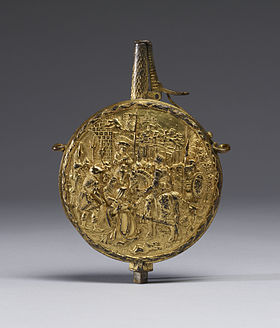
The designation of the Empire as "Byzantine" is a retrospective idea: it began only in 1557, a century after the
After the fall of Constantinople,
His son Andreas Palaiologos continued claims on the Byzantine throne until he sold the title to Ferdinand II of Aragon and Isabella I of Castile before his death in 1502.[26] However, there is no evidence that any Spanish monarch used the Byzantine imperial titles.
In Western Europe, the Roman concept of state was continued for almost a millennium by the Holy Roman Empire whose emperors, mostly of German tongue, viewed themselves as the legitimate successors to the ancient imperial tradition (King of the Romans) and Rome as the capital of its Empire. The German title of "Kaiser" is derived from the Latin name Caesar, which is pronounced [ˈkae̯sar] in Classical Latin.
The coronation of
In
In the early 20th century, the Italian fascists under their "Duce" Benito Mussolini dreamed of transforming Italy back into the Roman Empire again, encompassing the Mediterranean basin.[30] Associated with Italian fascism, Nazi Germany and Francoist Spain also connected their claims with Roman imperialism.[how?][citation needed]
Toponymy and ethnonymy
Aside from the city of Rome itself, the Imperial Roman name has survived in a number of regions and was also adopted by some of the political regimes that ruled them. These include:
- Romagna, the Italian region that was the administrative center of Byzantine Italy and thus remained associated with the Roman Empire when most of the country had fallen under Lombard rule;
- Rûm, the name by which the Eastern Roman Empire, thus the common name of the Sultanate of Rum for their realm (1077–1308).[31] Under the Ottoman Empire after the 1390s, the Rûm Eyalet was the region around Sivas, later known simply as Eyaletof Sivas.
- The name of the Turkish city of
- Romania, a habitual reference in medieval Latin and Romance languages to the Byzantine Empire, or between 1204 and 1261 to the Latin Empire. It survived for a time in place names such as that of Nafplio, which in Italian was referred to as Napoli in Romania well into the modern era, or to this day in the Bosnian region of Romanija.
- Rumelia, the Balkan parts of the former Eastern Empire, labelled "land of the Romans" following their conquest by the Ottomans and at a time when the territories in Asia Minor formerly known as Rum were more commonly referred to again as Anatolia. Eastern Rumelia was an Ottoman autonomous province (Vilayet) that was created in the aftermath of the Russo-Turkish War as a result of the Treaty of Berlin and was located in what is today Southern Bulgaria.
- Central Greece is still known colloquially as Roúmeli (Ρούμελη).
- Canton of Valais).
- The modern country of Romania. Romanians trace their origin to the Roman Empire's province of Roman Dacia, arguing that Roman colonization in the region gave rise to the Romanian people.
- The Aromanians, Megleno-Romanians and Istro-Romanians, ethnicities related to the Romanians whose names originate or originated from "Roman" or similar words.[34][35][36]
In
- The word Romance, naming the language family that also includes Spanish, Portuguese, French, Italian and Romanian among others, is itself derived from "Roman".
- The Francophone inhabitants of Romandy are called and self-identify as Romands and whose name ultimately originates from the Latin adjective "romanus". The language Franco-Provençal, which historically has been the main language of the Romands, has occasionally been called Rommant or Romand,[37] although most Romands now speak Swiss French instead of Franco-Provençal.
- Rûm in Asia Minor and the Middle East refers dependent on context to Byzantines and/or Orthodox Christians, namely the Rum Millet in the Ottoman Empire. Correspondingly, Orthodox Armenians are known as Hayhurum - literally, Armenian and Rûm - and Urums are Turkic-speaking Orthodox Christians in the Crimea and Georgia.
- Romaniote Jews also derive their name from the former Eastern/Byzantine/Ottoman Empire.
- In turn, during the 16th century, Portuguese used "rume" and "rumes" (plural) as a generic term to refer to the Mamluk-Ottoman forces they faced then in the Indian Ocean.[38]
- Chinese authors during the Ming dynasty similarly referred to the Ottomans in general as Lumi (魯迷), derived from Rûm. During the Qing dynasty they also used the word Wulumu (務魯木).
- The Domba people in India.
In popular culture

In September 2023, an internet trend emerged primarily on social media app
These TikToks primarily featured women asking their boyfriends how often they thought of the Roman Empire.[42] Many of the men in these videos respond by stating that they think of it frequently, leading to shock from the women.[43][40] Not all reactions from the men were universal; in one viral TikTok, when asked by his wife, one husband responds "Like the Nicki Minaj album?" likely in reference to Minaj's alter ego and her eponymous 2011 song. Another user on the app stated that she thought about the Roman Empire all the time, before positioning herself in front of a playlist of Minaj's music.[40] In the videos, many men frequently boasted of the accomplishments of the Roman Empire, such as the size of the empire, their technological advancements such as the aqueducts, and its military prowess.[41]
See also
- Classical antiquity
- Classical tradition
- History of the Roman Empire
- Succession of the Roman Empire
- Byzantine Empire
- Western Roman Empire
References
- ISBN 978-1-305-63347-6.
- ^ Neill, Thomas Patrick (1957). Readings in the History of Western Civilization, Volume 2 (Newman Press ed.). p. 224.
- ^ See History of Latin.
- ^ "Romance languages". Britannica.com. Retrieved 2018-11-24.
- ^ "Language Acquisition in the Romance Speaking World: Peru - Departamento de Educación". Departamento.pucp.edu.pe. Archived from the original on 2016-08-08. Retrieved 2016-05-14.
- ISBN 9783110302257. Retrieved 2016-05-14.
- ISBN 9783631572856. Retrieved 2016-05-14.
- ISBN 9781441151254. Retrieved 2016-05-14.
- ISBN 9788820330989. Retrieved 2016-05-14.
- PMID 25061515.
- ISBN 3-533-02253-6.
- ^ Uwe Pörksen, German Academy for Language and Literature's Jahrbuch [Yearbook] 2007 (Wallstein Verlag, Göttingen 2008, pp. 121-130)
- ^ a b Loanwords in the World's Languages: A Comparative Handbook (PDF). Walter de Gruyter. 2009. p. 370.
- ^
ISBN 978-3-11-021843-5. Retrieved 3 June 2020.
The Latin loanwords [in Dutch] (from Roman times, from Church Latin and from medical and scientific Latin) amount to 32.2% of all loanwords [...].
- ^ Sawicka, Irena. "A Crossroad Between West, East and Orient–The Case of Albanian Culture." Colloquia Humanistica. No. 2. Instytut Slawistyki Polskiej Akademii Nauk, 2013. Page 97: "Even according to Albanian linguists, Albanian vocabulary is composed in 60 percent of Latin words from different periods... When albanological studies were just emerging, it happened that Albanian was classified as a Romance language. Already there exists the idea of a common origin of both Albanian and Rumanian languages. The Rumanian grammar is almost identical to that of Albanian, but it may be as well the effect of later convergence within the Balkan Sprachbund.."
- ^
ISBN 9783110876888. Retrieved 3 June 2020.
[...] the Greek-based alphabet is the ancestor of the cyrillic alphabets used today in the Balkans and among the East Slavs.
- ^ "Incunabula Short Title Catalogue". British Library. Retrieved 2 March 2011.
- ^ Roberto Weiss, The Renaissance Discovery of Classical Antiquity (Oxford: Blackwell) 1969:1.
- ^ "Global Christianity – A Report on the Size and Distribution of the World's Christian Population" (PDF). Pew Research Center.
- ISBN 9780801490125.
- ^ Roberts & Skeat 1983, pp. 38−67, 75
- ^ Augustine, De Civitate Dei, book viii.
- ^ Carl J. Richard, Why We're All Romans: The Roman Contribution to the Western World, Rowman & Littlefield Publishers, 2010, p. 122.
- ^ Gabriel, Richard A. The Great Armies of Antiquity. Westport, Conn: Praeger, 2002. Page 9.
- SSRN 3130184.
- ^ Norwich, John Julius, Byzantium — The Decline and Fall, p. 446.
- ^ History.com Editors. "Romanov Family". History. Retrieved 2022-04-27.
- ISBN 978-0-312-23396-9.
- ISBN 978-0-521-31310-0.
- S2CID 162197480.
- ^ Alexander Kazhdan, "Rūm" The Oxford Dictionary of Byzantium (Oxford University Press, 1991), vol. 3, p. 1816. Paul Wittek, Rise of the Ottoman Empire, Royal Asiatic Society Books, Routledge (2013), p. 81: "This state too bore the name of Rûm, if not officially, then at least in everyday usage, and its princes appear in the Eastern chronicles under the name 'Seljuks of Rûm' (Ar.: Salâjika ar-Rûm). A. Christian Van Gorder, Christianity in Persia and the Status of Non-muslims in Iran p. 215: "The Seljuqs called the lands of their sultanate Rum because it had been established on territory long considered 'Roman', i.e. Byzantine, by Muslim armies."
- ^ See Joseph Laurent's extensive note in his (in French) L'Arménie entre Byzance et l'Islam depuis la conquête arabe jusqu'en 886, 1919, new edition revised and updated by Marius Canard, Lisbon: Librairie Bertrand, 1980, pp. 87–88, note 83.
- ^ (in Armenian) Darbinyan, M. «Էրզրում» [Erzurum] Armenian Soviet Encyclopedia. Yerevan: Armenian Academy of Sciences, 1978, vol. 4, p. 93.
- S2CID 52448884.
- ^ Burlacu, Mihai (2010). "Istro-Romanians: the legacy of a culture". Bulletin of the "Transilvania" University of Brașov. 7. 3 (52): 15–22.
- ^ Berciu Drăghicescu, Adina (2012). "Aromâni, meglenoromâni, istroromâni: Aspecte identitare și culturale" (in Romanian). Editura Universității din București.
{{cite journal}}: Cite journal requires|journal=(help) - ^ Marzys, Zygmunt (1978). "De la scripta au patois littéraire : à propos de la langue des textes francoprovençaux antérieurs au XIXe siècle(in French)". E-Periodica. Vox Romanica.
par cueur et en langage maternel, c'est assavoir en rommant
- ^ Ozbaran, Salih, "Ottomans as 'Rumes' in Portuguese sources in the sixteenth century"[permanent dead link], Portuguese Studies, Annual, 2001
- ^ Nyce, Caroline Mimbs (2023-09-15). "The Brain of a Man Who Is Always Thinking About Ancient Rome". The Atlantic. Retrieved 2023-09-18.
- ^ a b c d "Why Are Men Thinking About the Roman Empire So Often?". Time. 2023-09-15. Retrieved 2023-09-18.
- ^ ISSN 0190-8286. Retrieved 2023-09-18.
- ISSN 0362-4331. Retrieved 2023-09-18.
- ^ Noyen, Maria. "The 'female version' of the male obsession with the Roman Empire is — to the surprise of no one — completely different". Insider. Retrieved 2023-09-18.
Sources
- Kuzmanović, Zorica; Mihajlović, Vladimir D. (2015). "Roman Emperors and Identity Constructions in Modern Serbia". Identities: Global Studies in Culture and Power. 22 (4): 416–432.
- Roberts, Colin H.; Skeat (1983), The Birth of the Codex, London: Oxford University Press, ISBN 0-19-726024-1
